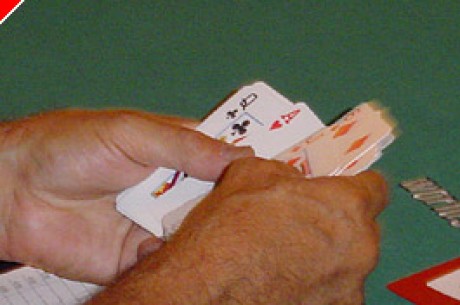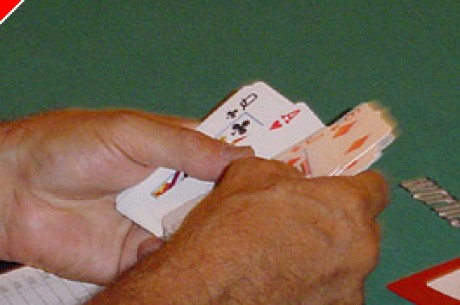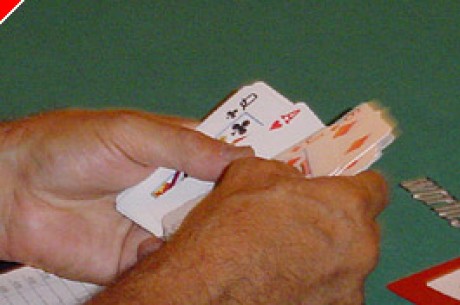Stud Poker Strategy - Big Spread Limit Games, Part Two

I wrote about spread limit stud a few columns back – not the typical low limit game of $1-5 or $1-3 that's spread in some poker rooms (and widely spread at my home poker room of Foxwoods). Rather I wrote of a game more typically found in a home or private game — $5-15 or pot limit stud. I'd like to continue with that thread here.
These large spread limit games require the thoughtful player to shift his strategy because of the potential for huge bets relative to the pot size. In limit, the last two betting rounds are often automatic. The pot becomes so large that the limited bet size almost requires a call if there is practically any chance of winning the pot – practically any chance that your opponent is bluffing. But that's not the case in pot limit.
In pot limit, it's more important that you be able to truly read and define your opponent's
hand. Close calls become more significant than they would be in limit games because the mistake of calling with a losing hand is relatively much larger.
Here's an example of that. You're in a $3/6 limit stud game, with a $.50 ante and a $1.00 force. You're dealt (Ts Js)Tc. Two players, including one player with a King and another with a Queen who act before you, call the $1.00 forced bet. Your cards are live. You call as well. On Fourth Street none of you pair. You get the very helpful (Ts Js)Tc 9s – three to a straight flush. The King is high and quickly bets $3.00 the Queen thinks and calls. You call as well – realizing that you are on a draw but seeing the pot getting large enough to justify it. On Fifth Street you hit the 2s – giving you a 4-Flush. The King bets, the Queen folds and you call. On Sixth Street you get a random unhelpful card, your opponent gets an Ace and bets. You call – getting much better than the 4.25:1 pot odds you need to justify your flush draw (not to mention the additional two cards that give you trip Ts).
On the River your opponent, showing (xx) Kh 3d 6s Ah (x) bets $6.00. You don't improve at all – having just your original pair of Ts. You should call, given that there is still a chance, albeit a small chance, that your Ts will win — and you are getting nearly 8:1 pot odds ($6.00 to call and a pot of $47.00). It's the classic example of having to call on the River in a limit stud game, even though you think, but aren't certain, that you're probably beaten.
Now let's change to a Pot Limit game. Everything is the same except the way the betting is structured. You're dealt the same hand against the same opponents and the same opponents' cards.
The first difference might be right on Third Street. In the limit game, you might properly conclude that raising the $1.00 forced bet to $3.00 wouldn't make sense – because you're going to get called for the additional $2.00 and won't succeed in limiting the field. You might be against a King or a Queen who are slowplaying (in my opinion mistakenly) – just enriching a pot they are favored to win. So you're usually better off just calling in this situation to cheaply try and improve.
But in Pot Limit, by the time the betting comes to you the pot is $7.00. With your call it's $8.00 – meaning you can raise to $9.00. You'll probably knock out the bring-in and at least the King or the Queen if they don't have a premium pair. If they do have a Premium Pair they may reraise you – in which case you can fold.
Let's say that one of them calls you. This drastically changes what you do on Fourth. In the limit example you improved to a 3-card straight flush draw to go along with your pair of Ts. You properly called the $3.00 bet from the King – since the implied odds (the amount you might eventually make if your hand hit compared with the cost of the making your hand) were very great. You were only facing a $3.00 bet. You have about a 45% chance of winning the hand if you proceed to the River. It would cost you either $15 or $21.00 more to make your hand ($3 on Fourth plus $6.00 on each of the last three streets). But in this pot limit game, the King, if he had or was representing a pair of Kings, would be able to bet the pot of $27.00. You'd have a much, much tougher call to make – having to decide whether your opponent was a) bluffing, b) betting a pair of Kings for value, or c) semi-bluffing with a pocket pair. If you concluded he had the Kings the proper action would be to fold – since the potential cost of playing three more rounds to make your hand would be prohibitive (potentially $81 on Fifth plus $243 on Sixth plus $729 on the River – assuming unlimited stacks).
Similarly, on the River, if you didn't make anything more than the pair of Ts, you'd be much better off folding than calling his pot sized bet – since instead of getting nearly 8:1 odds, you'd be only getting 2:1 on your call. That's the key to playing pot limit – recognizing when you have to lay down your hand because you're probably beat.
Accordingly, reading your opponents becomes a much more important skill in pot limit stud games – since you can correctly fold in the later streets – saving yourself a lot of money in the process. It is that money – the money you save by correctly folding – that becomes your profit in a pot limit game. The better you become at reading your opponents the more money you will make.
Ed Note: Make more money at Noble Poker








